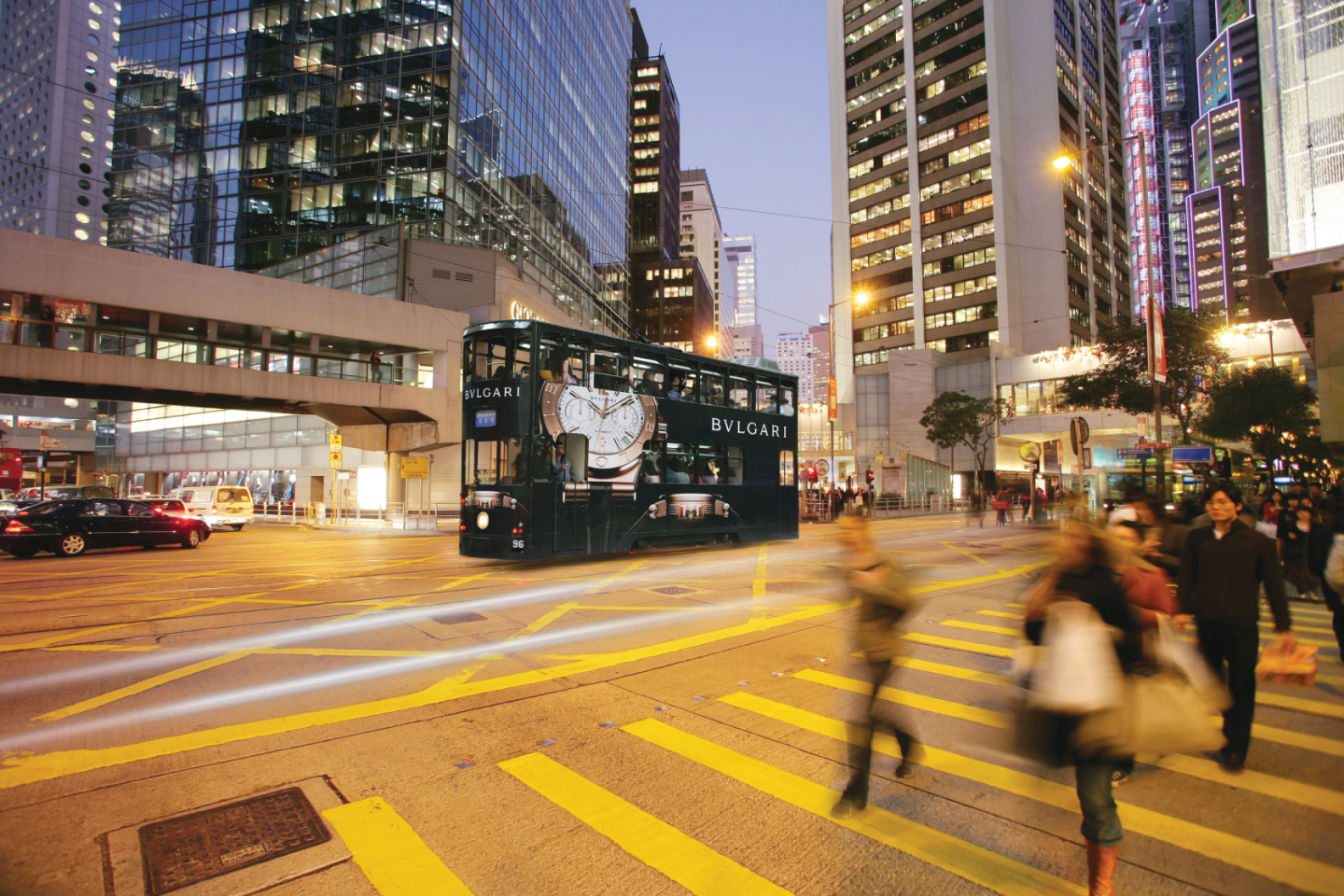The Company
Transport advertising: a key role in the Group's international expansion
The Group began to expand into Asia Pacific by taking over contracts managed by former Avenir subsidiaries Sky Sites and Pearl & Dean. With this, JCDecaux brought its advertising installations to Macau Airport and to Hong Kong's airport and underground stations.
Its expansion in China picked up pace in 2005 with the signature of a joint venture with the company that operated Shanghai Airport's advertising spaces and the acquisition of two local companies, MNI and MPI, which gave JCDecaux a presence in many Chinese underground and bus stations.
For the first time, JCDecaux established a foothold in a new country thanks to transport advertising rather than the installation of street furniture. Today, it manages advertising activity in 11 airports and more than 30 underground lines in Asia.
 Bulgari advertisement on a tramcar - Hong Kong
Bulgari advertisement on a tramcar - Hong Kong
In 2007, another transport contract saw JCDecaux establish operations at Dubai Airport and launch its development in the Middle East.
In 2014, the Group manages advertising concessions in more than 145 airports with a global audience of 1.5 billion passengers per year. It is also present in more than 271 transport (bus, station and underground) concessions.
In each of these areas, JCDecaux offers passengers a new experience and spectacular displays.
The Group also offers large-scale communication installations in train and underground stations. In 2014, at London's Waterloo station, through which eight million passengers travel every month, JCDecaux inaugurated the UK's largest advertising screen. As well as advertising, this high-definition medium, which covers the length of the hall, broadcasts real-time traffic information and a Twitter feed for passenger interaction. In Latin America, announcers are given the opportunity to decorate Santiago de Chile's underground stations and brand its trains as well as appearing on digital and interactive furniture to give passengers an immersive advertising experience.

50 years after the invention of the street furniture advertising concept, which accounted for 44.5% of the Group's 2013 revenue, the Transport sector, JCDecaux's main growth driver between 2003 and 2012, accounted for 37.9% of its 2013 revenue. Ideal for communication between brands and travellers, it serves not only as a vector for international development but also as an innovation laboratory which is beneficial to all of JCDecaux's activity segments and subsidiaries.
Its expansion in China picked up pace in 2005 with the signature of a joint venture with the company that operated Shanghai Airport's advertising spaces and the acquisition of two local companies, MNI and MPI, which gave JCDecaux a presence in many Chinese underground and bus stations.
For the first time, JCDecaux established a foothold in a new country thanks to transport advertising rather than the installation of street furniture. Today, it manages advertising activity in 11 airports and more than 30 underground lines in Asia.

In 2007, another transport contract saw JCDecaux establish operations at Dubai Airport and launch its development in the Middle East.
In 2014, the Group manages advertising concessions in more than 145 airports with a global audience of 1.5 billion passengers per year. It is also present in more than 271 transport (bus, station and underground) concessions.
In each of these areas, JCDecaux offers passengers a new experience and spectacular displays.
The Group also offers large-scale communication installations in train and underground stations. In 2014, at London's Waterloo station, through which eight million passengers travel every month, JCDecaux inaugurated the UK's largest advertising screen. As well as advertising, this high-definition medium, which covers the length of the hall, broadcasts real-time traffic information and a Twitter feed for passenger interaction. In Latin America, announcers are given the opportunity to decorate Santiago de Chile's underground stations and brand its trains as well as appearing on digital and interactive furniture to give passengers an immersive advertising experience.

50 years after the invention of the street furniture advertising concept, which accounted for 44.5% of the Group's 2013 revenue, the Transport sector, JCDecaux's main growth driver between 2003 and 2012, accounted for 37.9% of its 2013 revenue. Ideal for communication between brands and travellers, it serves not only as a vector for international development but also as an innovation laboratory which is beneficial to all of JCDecaux's activity segments and subsidiaries.



